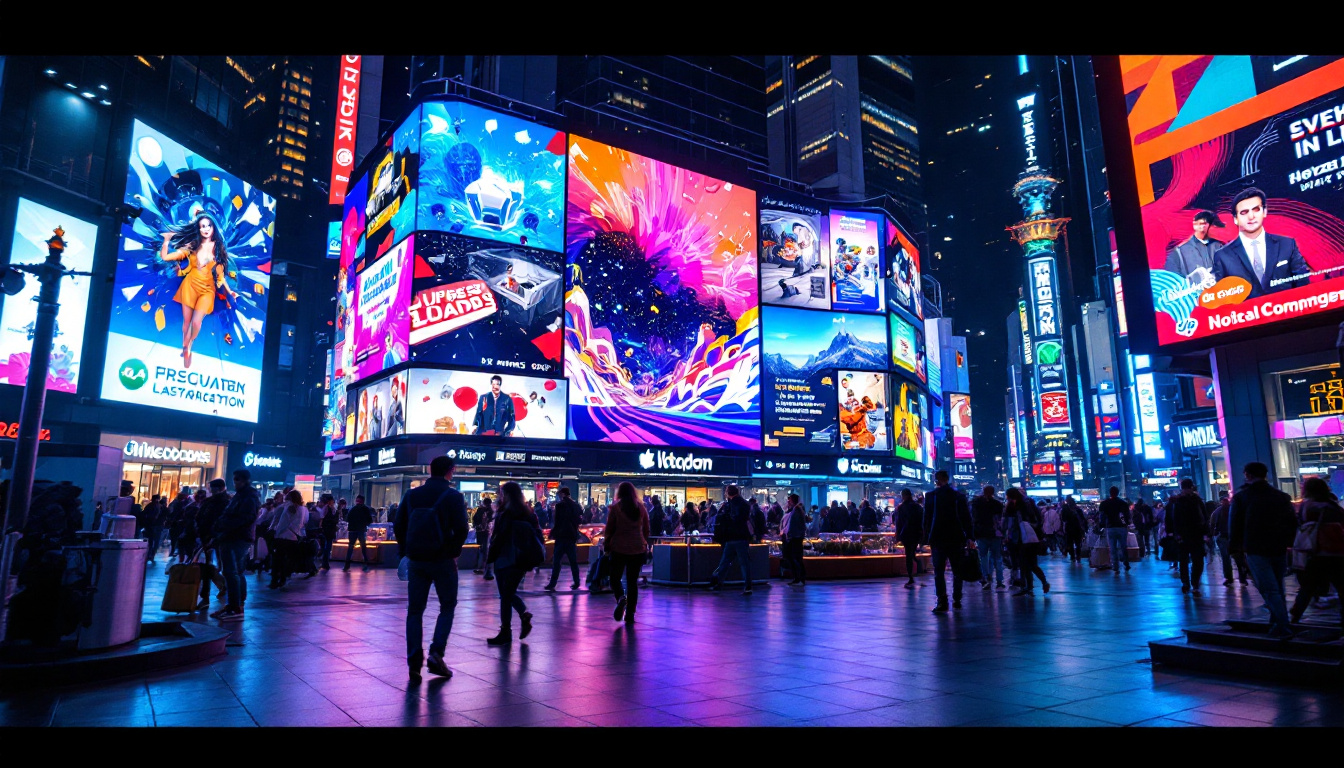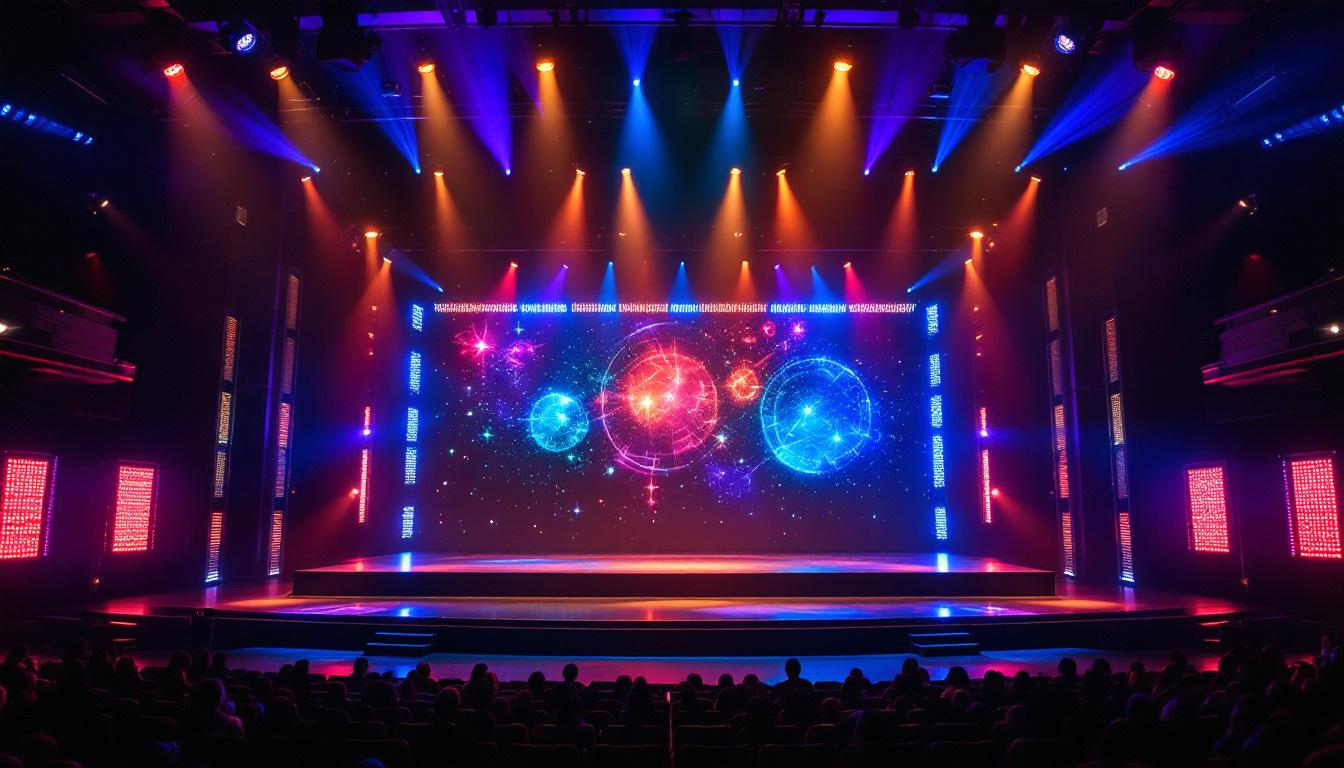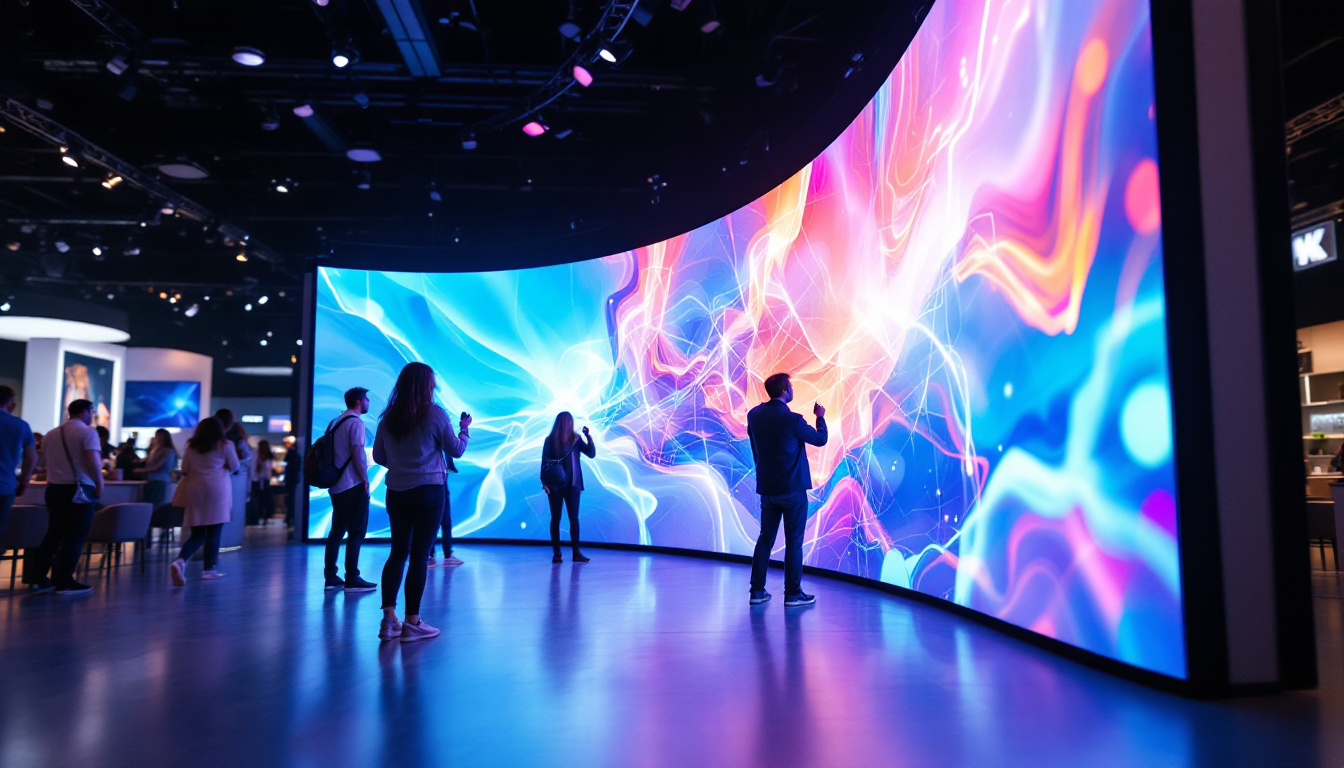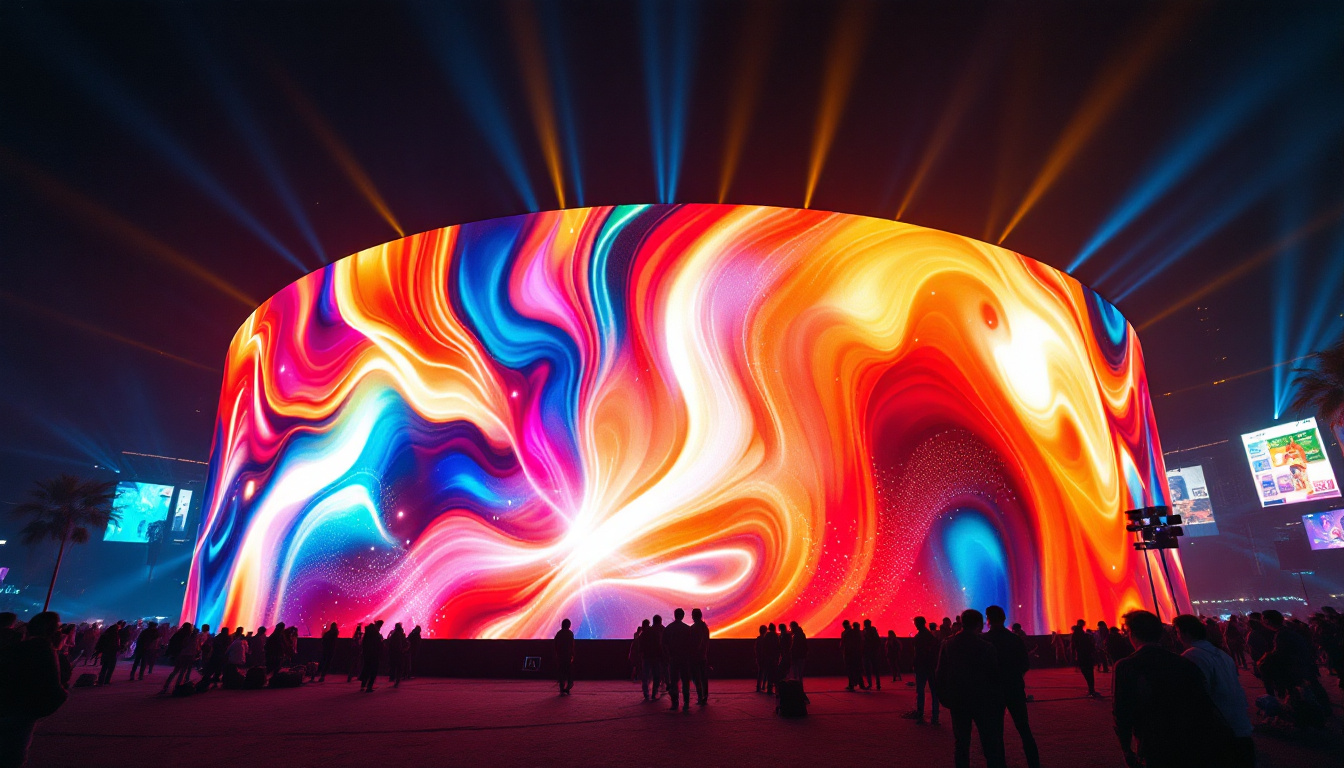In today’s fast-paced digital world, effective communication is essential for businesses and organizations. One of the most powerful tools for conveying messages is through visual displays, particularly LCD and LED signage. This article delves into the intricacies of LCD signage, exploring its features, benefits, and applications, while also providing a comprehensive understanding of LED display technology.
Understanding LCD Signage
LCD (Liquid Crystal Display) signage has become a staple in various sectors, from retail to transportation. This technology utilizes liquid crystals sandwiched between layers of glass or plastic to produce images. The result is a vibrant, high-quality display that captures attention and conveys information effectively.
How LCD Technology Works
At the core of LCD technology is the manipulation of light. LCDs require a backlight, typically provided by LEDs, to illuminate the liquid crystals. When an electric current is applied, the crystals align in a way that either blocks or allows light to pass through, creating images and text. This process enables LCD screens to display a wide range of colors and sharp visuals.
One of the key advantages of LCD technology is its ability to produce high-resolution images. With advancements in pixel density, modern LCD displays can achieve stunning clarity, making them ideal for advertising, information dissemination, and interactive applications. The technology has evolved significantly, with features such as touch sensitivity and the ability to integrate with other digital systems, further enhancing user engagement and interactivity.
Benefits of LCD Signage
LCD signage offers numerous benefits that make it a preferred choice for many businesses. First and foremost is its versatility. Whether used in a retail environment, corporate setting, or public space, LCD displays can be tailored to suit various needs. They can be mounted on walls, placed on stands, or integrated into kiosks, providing flexibility in design and placement.
Another significant advantage is the ability to update content easily. Unlike traditional printed signage, which requires time and resources to change, LCD displays can be updated in real-time. This feature is particularly valuable for businesses that need to promote time-sensitive information, such as sales, events, or emergency announcements. Moreover, the ability to schedule content allows businesses to target specific audiences at different times of the day, optimizing engagement and ensuring that the right message reaches the right people at the right moment.
Additionally, LCD signage can enhance customer experience by providing interactive features. Touchscreen capabilities allow users to navigate through information, making it easier for them to find what they need. This interactivity not only keeps customers engaged but also encourages them to spend more time in a space, ultimately leading to increased sales and customer satisfaction. Furthermore, with the integration of analytics, businesses can gather valuable data on viewer engagement, helping them refine their marketing strategies and improve overall effectiveness.
Exploring LED Displays
LED (Light Emitting Diode) displays have gained immense popularity in recent years, often overshadowing traditional LCD technology. Understanding the differences between these two display types is crucial for making informed decisions regarding signage solutions.
What Sets LED Displays Apart
LED displays utilize semiconductor technology to produce light. Each pixel consists of tiny LEDs that emit red, green, and blue light, which can be combined to create a full spectrum of colors. This technology allows for brighter displays with better contrast and energy efficiency compared to LCDs.
One of the standout features of LED displays is their outdoor capability. Unlike LCDs, which can struggle with visibility in direct sunlight, LED displays are designed to perform well in bright environments. This makes them ideal for outdoor advertising, sports arenas, and large-scale events. Moreover, many LED displays come equipped with advanced features such as automatic brightness adjustment, ensuring optimal visibility regardless of the surrounding light conditions.
Advantages of LED Technology
LED displays offer several advantages that enhance their appeal. Their longevity is one of the most significant benefits; LED technology can last up to 100,000 hours, reducing the need for frequent replacements. This durability translates to lower maintenance costs over time. Additionally, the modular design of many LED displays allows for easy repairs and upgrades, further extending their lifespan and adaptability to changing technology.
Additionally, LED displays are known for their energy efficiency. They consume less power than traditional lighting options, making them a more sustainable choice for businesses looking to reduce their carbon footprint. Furthermore, the vibrant colors and high brightness levels of LED displays ensure that messages stand out, capturing the attention of passersby effectively. This capability is particularly beneficial in crowded urban environments where competition for attention is fierce. With the ability to display dynamic content, including animations and video, LED displays can engage audiences in ways that static signage simply cannot, making them a powerful tool for marketing and communication.
Comparing LCD and LED Signage
When considering signage options, it is essential to compare LCD and LED technologies to determine which best suits specific needs. Each has its unique strengths and weaknesses, making them suitable for different applications.
Image Quality and Performance
In terms of image quality, both LCD and LED displays have their merits. LCDs are known for their excellent color accuracy and sharpness, making them ideal for displaying detailed images and text. However, LED displays excel in brightness and contrast, particularly in outdoor settings where visibility is crucial.
For indoor applications, where lighting conditions can be controlled, LCD displays may provide superior image quality. Conversely, for outdoor advertising or environments with high ambient light, LED displays are often the better choice due to their enhanced visibility. Furthermore, LED technology allows for a wider viewing angle, ensuring that the content is easily seen from various positions, which is particularly beneficial for large crowds or busy public spaces. This versatility makes LED displays a popular choice for events, concerts, and sporting venues, where capturing the attention of a diverse audience is paramount.
Cost Considerations
Cost is a significant factor when choosing between LCD and LED signage. Generally, LCD displays tend to be more affordable upfront, making them an attractive option for businesses with budget constraints. However, it is essential to consider long-term costs, including maintenance and energy consumption.
LED displays, while initially more expensive, can offer savings over time due to their longevity and energy efficiency. Businesses should weigh the initial investment against potential savings and the expected lifespan of the signage to make an informed decision. Additionally, the cost of installation and any necessary infrastructure should also be factored in, as LED displays may require more robust mounting solutions due to their weight and size. As technology continues to advance, the price gap between LCD and LED is gradually narrowing, making it increasingly feasible for businesses to consider the long-term benefits of investing in LED signage, especially as they seek to enhance their brand visibility and engagement in a competitive marketplace.
Applications of LCD and LED Signage
Both LCD and LED signage have found applications across various industries, each serving unique purposes that enhance communication and engagement.
Retail and Advertising
In the retail sector, signage plays a crucial role in attracting customers and promoting products. LCD displays are commonly used for in-store promotions, showcasing product information, and creating engaging visual experiences. Their ability to display high-resolution images makes them ideal for highlighting product features and benefits.
On the other hand, LED displays are often utilized for outdoor advertising, such as billboards and digital signage. Their brightness and visibility in daylight make them effective for capturing the attention of pedestrians and drivers alike. Many businesses use a combination of both technologies to maximize their advertising reach.
Transportation and Wayfinding
Transportation hubs, such as airports and train stations, rely heavily on effective signage for wayfinding and information dissemination. LCD displays are often used for flight information boards, providing real-time updates to travelers. Their clarity and detail ensure that important information is easily readable.
LED displays, however, are frequently employed for large-scale wayfinding solutions, such as digital direction signs and arrival/departure boards. Their ability to be seen from a distance and in varying lighting conditions makes them invaluable in busy transportation environments.
Future Trends in Signage Technology
The world of signage technology is continually evolving, driven by advancements in digital technology and changing consumer preferences. Understanding these trends can help businesses stay ahead of the curve and leverage the latest innovations.
Integration of Smart Technology
One of the most significant trends in signage technology is the integration of smart technology. digital displays are increasingly being equipped with sensors and connectivity features that allow for interactive experiences. For instance, touchscreens enable customers to engage directly with content, while sensors can adjust brightness based on ambient light conditions.
This integration not only enhances the user experience but also allows businesses to gather valuable data on customer interactions, enabling more targeted marketing strategies.
Content Management Systems
As the demand for dynamic content increases, businesses are turning to advanced content management systems (CMS) to streamline the process of updating and managing signage content. These systems allow for remote updates, scheduling, and real-time monitoring, making it easier for businesses to keep their messaging fresh and relevant.
With the rise of cloud-based solutions, managing multiple displays across various locations has never been easier. Businesses can ensure consistency in branding and messaging while adapting to local needs and trends.
Conclusion
In conclusion, LCD and LED signage represent powerful tools for communication in today’s digital landscape. Understanding the differences between these technologies, along with their respective benefits and applications, is essential for businesses looking to enhance their visibility and engagement.
As technology continues to advance, the future of signage will undoubtedly be shaped by innovations that prioritize interactivity, sustainability, and user experience. By staying informed about these trends, businesses can make strategic decisions that not only meet their current needs but also position them for success in the ever-evolving marketplace.
Discover LumenMatrix LED Display Solutions
Ready to elevate your brand’s presence and captivate your audience with unparalleled clarity? LumenMatrix is at the forefront of LED display technology, offering a diverse range of innovative solutions tailored to your unique needs. From Indoor and Outdoor LED Wall Displays to specialized options like Vehicle, Sports, and Floor LED Displays, our products are designed to create immersive visual experiences that command attention. Embrace the future of visual communication with our Custom, All-in-One, and Transparent LED Displays. Check out LumenMatrix LED Display Solutions today and transform how you engage with your audience.































